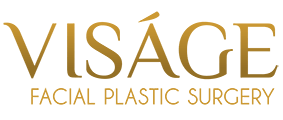Resuming Normal Activities
In the short term, you may have to change your normal life activities in a variety of ways to improve your recovery. Continuing life as usual may be detrimental to your final result. Please refer to the information below.
Driving
Do not drive a vehicle or operate heavy machinery in the first few days if you have received general anesthesia. The anesthetic tends to persist in the body for a few days and may decrease reaction time. Also, do not drive until swelling has decreased in the eye area and you have no restrictions to turning your head. If you are taking opioids for pain, you will not be able to drive until you stop taking them. Please arrange for a driver during this time.
Exercise
Probably the hardest part will be becoming a less active person, for a brief time, to minimize swelling and bruising. We understand less exercise may also depress your mood. When you return to exercise depends upon how your recovery has progressed. Some patients can start exercising at 50% of what they normally do at 2 weeks, while others must wait 1 month. Please ask us before proceeding.
Bathing & Showering
Work & Social Activities
When you return to work depends upon the amount of physical activity and public contact your job involves, and also the amount of swelling and discoloration you develop. Many patients return to work and go out socially 2 or 3 weeks after their procedure.
Makeup
Makeup may be worn right away after your procedure in areas away from incisions or resurfaced skin. A thick makeup base or concealer with a yellow base is useful to conceal bruising. Generally, makeup should not be applied over incisions or resurfaced areas until 2-4 weeks after the procedure (please consult with us first). Fragrance-free, hypoallergenic mineral based powders are best over these areas.
Eye Glasses/Contacts
Eyeglasses are best in the immediate postoperative period. Contact lenses should only be used when swelling around the eyes has decreased. If eyelid surgery was performed, contacts should not be worn for 4-6 weeks. For nose surgery patients, no glasses of any type should be worn during the time after the protective splint is removed until about 4 weeks after your procedure.
Clothing
For two weeks after your procedure, wear clothing that is not tight around the neck. In particular, for patients with incisions around the ears, wear button-down clothing that doesn't have to be pulled over your head.
Skin & Hair Products
Avoid any products containing fragrance (check the list of ingredients) around incisions or resurfaced areas for 4 weeks after the procedure. Do not dye hair if the procedure includes hairline or scalp incisions until 4 weeks after the treatment.
Household Activities
Ok to resume at any time as long as you avoid straining, lifting, or elevating your heart rate/blood pressure.


